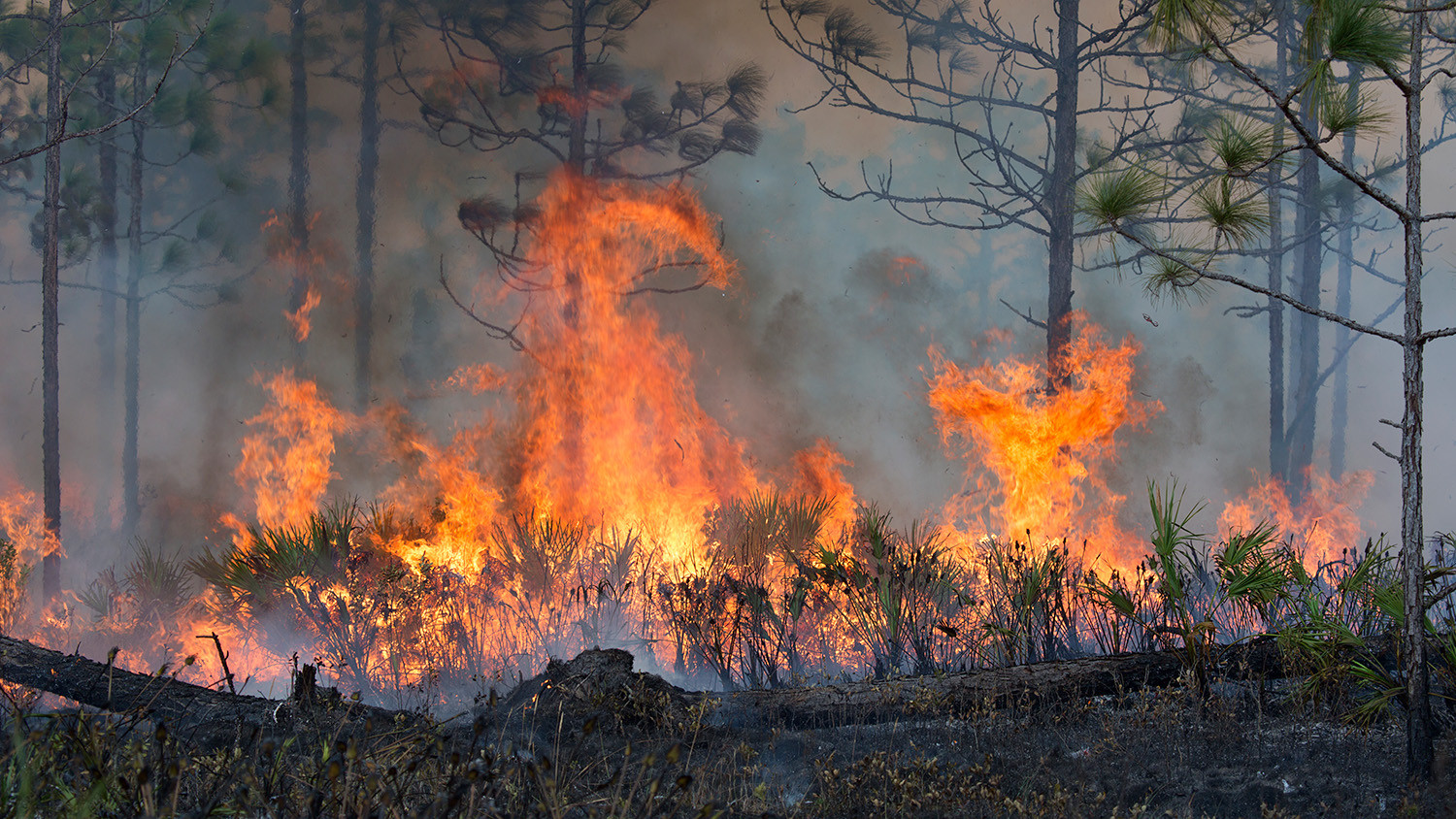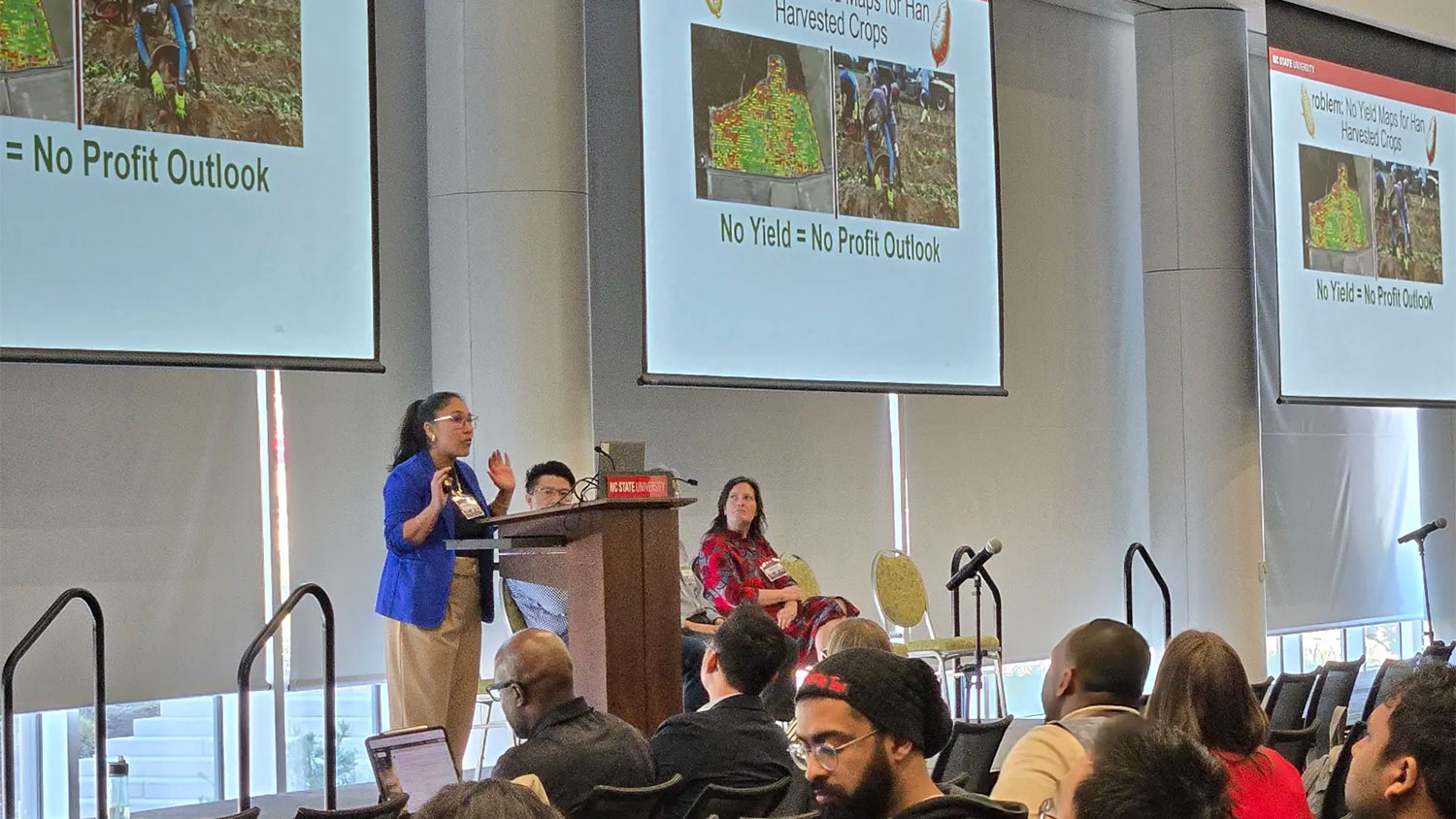Hurricanes are among the most destructive forces found in nature, capable of causing extensive environmental damage — a factor that can raise the risk of wildfires, according to one NC State expert.
“When a hurricane makes landfall, the strong winds and heavy rain can topple trees, leaving behind needles, leaves and branches that can act as fuels for wildfires,” said Robert Scheller, a professor of forestry and environmental resources and Center for Geospatial Analytics Faculty Fellow.
Scheller, who studies fire ecology, said pine trees pose a higher wildfire risk than many other trees, such as maples, because the needles contain higher concentrations of flammable resins. These resins can easily ignite when exposed to a heat source, allowing the pine needles to quickly catch fire and burn rapidly, especially in dry conditions.
Pine needles also decompose at a slower rate due to a waxy coating that makes it difficult for bacteria and fungi to break them down, according to Scheller. As a result, the needles typically remain on the ground longer compared to other foliage.
Hurricane-force winds can kill a large number of trees in pine forests, particularly those located close to where storms make landfall, leaving behind a large amount of dead needles. This is known as fuel loading, or the amount of combustible material in an area. It is a major driver of fire behavior, and the amount of fuel in an area determines how hot, large, long and fast a fire can burn.

In 2018, Hurricane Michael destroyed 72 million tons of standing timber across the Florida Panhandle, including about 1.3 million acres of longleaf pine habitat. Two years later, the Bertha Swamp Road Fire burned more than 33,000 acres of timberland, fueled by the debris.
Hurricane Helene also recently caused extensive damage to forests across Florida’s Big Bend region and other parts of the southeastern U.S., including western North Carolina and other parts of the southern Appalachians. The southern Appalachians, which includes the Blue Ridge Parkway and Great Smoky Mountains National Park, is primarily forested, with a substantial portion being pine forests.
Scheller said a tropical storm like Hurricane Helene, followed by severe drought in the fall, could potentially create conditions for extreme wildfires in western North Carolina and other parts of the southern Appalachians. North Carolina’s drought status can be viewed online at the U.S. Drought Monitor.
The U.S. Forest Service, National Park Service and other government agencies often implement prescribed burns and other practices to reduce fuel loads on state and federal lands. They also offer a variety of cost-sharing and incentive programs to encourage private landowners to do the same.

More than 50% of the 751 million acres of forest land in the U.S. is privately owned, with most being managed by families or individuals to produce timber. The remaining acres of private forests are managed by corporations, conservation groups and others.
“One of the biggest challenges with mitigating wildfire risk after a hurricane is that much of the destruction happens on private property, and a government agency needs permissions before cleaning up downed trees following a storm,” Scheller said.
Trees significantly damaged by storms often have very little commercial value because the damage can lead to major defects like cracks, splinters and broken limbs, making the wood unsuitable for high-quality lumber production.
Landowners are often left with limited options to salvage damaged trees after a hurricane, with many disposing of the debris by chipping it up or burning it. Both methods quickly release carbon into the atmosphere, unfortunately.
One alternative is transforming downed trees into biochar, a charcoal-like substance produced by heating organic matter (e.g. tree debris) with limited oxygen, according to Scheller. Biochar is mainly used in agriculture and plantation forestry to enhance plant growth and soil health.
“If you burn or chip up downed trees, you’re releasing large amounts of carbon into the atmosphere and fueling climate change,” Scheller said. “Biochar would hold the carbon in the ground for much longer.”

Biochar and other alternatives will prove vital in the coming decades as climate change accelerates due to greenhouse gas emissions, creating conditions that are expected to increase the frequency and intensity of hurricanes, wildfires and other natural hazards.
A study published by Scheller and his colleagues (including recent Geospatial Analytics Ph.D. graduate Kate Jones), for example, found that more extreme and frequent droughts would dramatically increase the amount of forest burned by wildfire in the southern Appalachians through the end of the century.
To make matters worse, some tree species are shifting their ranges in response to the warmer and drier conditions created by climate change, potentially raising the risk of wildfires. That includes the Sabal palmetto.
Sabal palm, which is native to Florida and the coastal regions of North Carolina, South Carolina and Georgia, is migrating northward and has already been spotted in the Sandhills region of North Carolina, located between the Piedmont and Coastal Plain regions.
While Sabal palms are considered fire-tolerant, the leaves are highly flammable. “An increase in palmetto in the understory will make wildfires more difficult to contain and extinguish compared to the typical understory found in North Carolina,” Scheller said.
Scheller added that homeowners should carefully consider what species they plant, noting that tree migration can be unintentionally assisted by humans. Sabal palms, for example, can spread when animals eat the fruit and deposit the seeds in new locations.
This article was originally published in CNR News.
- Categories:



